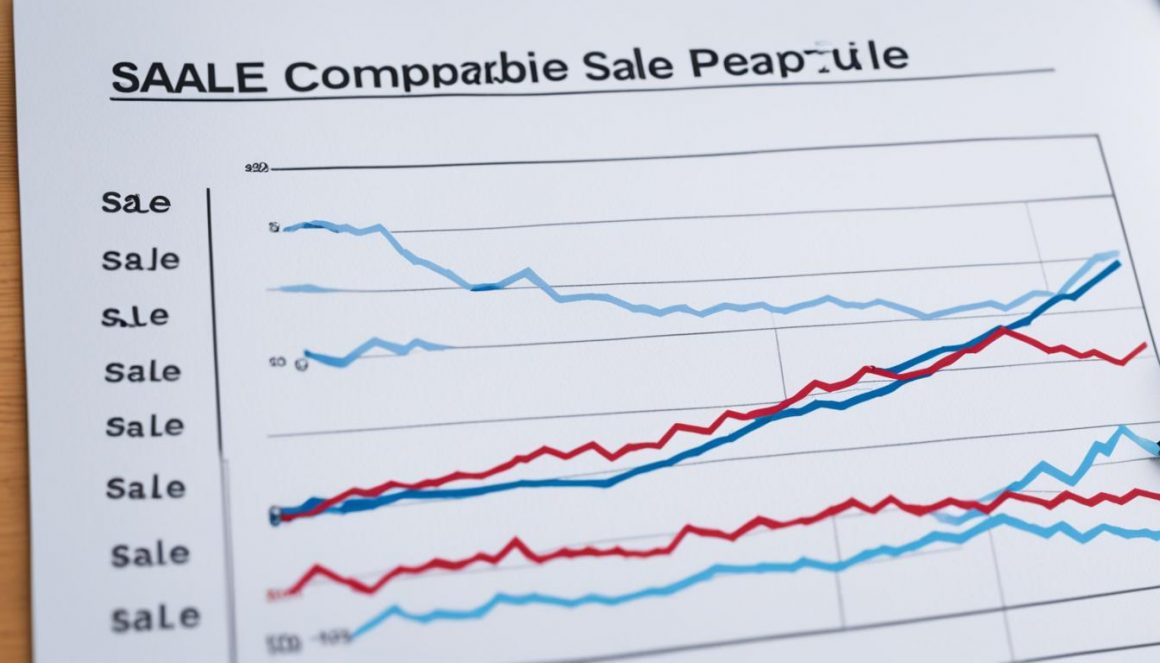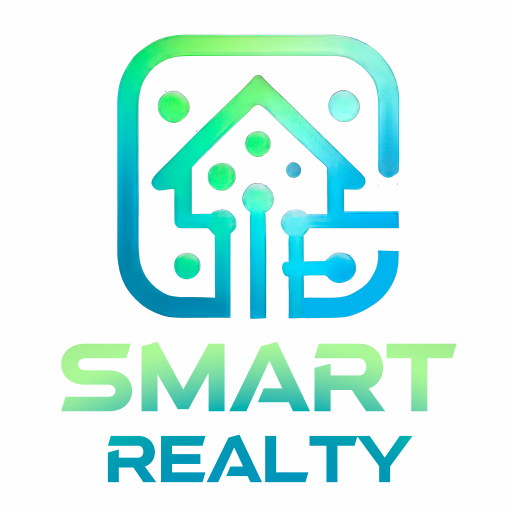In recent times, Automated Valuation Models (AVMs) have gained significant attention as a tool for property valuation in the real estate industry. AVMs are computerized models used by mortgage originators and secondary market issuers to determine the collateral worth of a mortgage secured by a consumer’s principal dwelling. These models utilize data analysis and sophisticated algorithms to estimate property values with a reasonable degree of accuracy.
Key Takeaways:
- AVMs are computerized models used in real estate valuation.
- They use data analysis and algorithms to estimate property values.
- AVMs are commonly used by mortgage originators and secondary market issuers.
- They provide a reasonable degree of accuracy in property valuation.
- AVMs save time and streamline the valuation process.
What is an AVM in Real Estate?
An AVM in real estate, also known as an Automated Valuation Model, is a method that combines data analysis and advanced algorithms to estimate property values. AVMs utilize statistical regression analysis to analyze the relationship between various variables, such as property size, age, and location. By analyzing past sale prices and market trends, AVMs can predict the current worth of a property with a reasonable degree of accuracy.
AVMs have revolutionized the process of property valuation by providing a fast and efficient alternative to traditional appraisal methods. Through the use of sophisticated algorithms and comprehensive data analysis, AVMs can assess a property’s value based on various factors to provide a reliable estimate.
One of the key components of AVMs is statistical regression analysis, a powerful tool that examines the relationships between different variables and property values. By identifying patterns and correlations in historical sales data, AVMs can make predictions about the current value of a property.
The advanced algorithms employed by AVMs take into account a wide range of data, including recent comparable sales, market trends, and property characteristics. This comprehensive approach ensures that the estimated property value is based on relevant and up-to-date information.
AVMs provide a valuable tool for both buyers and sellers in the real estate market. Buyers can use AVMs to assess the worth of a property before making an offer, while sellers can use AVMs to determine a suitable listing price. Additionally, AVMs are commonly used by lenders for mortgage underwriting and by appraisers to supplement their own valuation process.
In summary, AVMs in real estate leverage data analysis and advanced algorithms to estimate property values. Through the use of statistical regression analysis and comprehensive data analysis, AVMs provide a quick and reliable assessment of a property’s worth. Whether used by buyers, sellers, or professionals in the industry, AVMs offer an efficient and accurate method for property valuation.
Types of AVMs
Automated Valuation Models (AVMs) encompass various methodologies that estimate property values based on different approaches. These AVM types include the Hedonic Pricing Model, Comparable Sale Model, Mark-to-Market Model, and Ensemble models.
Hedonic Pricing Model
The Hedonic Pricing Model estimates property value by analyzing specific features, such as location, size, number of rooms, and amenities. This model utilizes statistical regression analysis and machine learning techniques to provide granular valuations and valuable insights into the importance of different attributes in determining property prices.
Comparable Sale Model
The Comparable Sale Model determines property value by comparing it to recent sales of similar properties in the area. This approach relies on real market data and allows for market sensitivity and applicability to various property types. However, it may face limitations such as limited data availability, subjectivity in selecting comparable properties, and a lack of consideration for long-term trends and specific property attributes.
Mark-to-Market Model
The Mark-to-Market Model adjusts past sales prices for current market trends using a home price index. This model provides real-time valuation, capturing short-term fluctuations and long-term trends. However, its effectiveness relies on data availability and may lack property-specific information, such as detailed property attributes.
Ensemble Models
Ensemble models combine multiple AVM methodologies to improve accuracy by leveraging the strengths of each individual model. By blending different approaches, ensemble models aim to enhance the reliability and predictive power of property valuations.
Understanding the different types of AVMs offers valuable insights into their underlying methodologies and application in real estate valuation. In the next section, we will delve deeper into the specific details and advantages of the Hedonic Pricing Model.
Hedonic Pricing Model
The Hedonic Pricing Model is a widely used approach for estimating property value based on specific features that influence housing prices, such as location, size, number of rooms, and amenities. By analyzing these property features and their impact on market prices, the Hedonic Pricing Model offers a granular valuation approach that provides valuable insights into the importance of various attributes in determining property values.
This model utilizes linear regression and machine learning techniques to analyze large datasets and identify the relationships between property features and market prices. By leveraging advanced algorithms, the Hedonic Pricing Model can capture complex relationships, resulting in more accurate property valuations.
One of the key advantages of the Hedonic Pricing Model is its versatility. It can be applied to different property types and markets, providing valuable insights for residential, commercial, and investment properties. This flexibility makes it a valuable tool for various stakeholders in the real estate industry, including buyers, sellers, lenders, and appraisers.
However, the Hedonic Pricing Model also presents challenges related to data availability and quality. Accurate and comprehensive property data is essential to ensure the model’s effectiveness. Additionally, the complexity of the model and the need for high-quality data can pose challenges in terms of implementation and maintenance.
Another consideration is the temporal validity of the model. As property markets and preferences change over time, it is important to regularly update and refine the model to ensure its accuracy and relevance.
Furthermore, the heterogeneity of property attributes and market conditions adds complexity to the modeling process. It is crucial to account for variations in property features and market dynamics to avoid misrepresentations and inaccuracies in property valuations.
Despite these challenges, the Hedonic Pricing Model remains a valuable tool in real estate valuation. It provides a detailed and comprehensive approach to property valuation that offers valuable insights into the factors driving housing prices. By leveraging machine learning techniques and analyzing granular data, this model can support informed decision-making and provide stakeholders with a deeper understanding of property values.


Comparable Sale Model
The Comparable Sale Model is an essential tool used in real estate to estimate property value by comparing it to recent sales of similar properties. By analyzing real market data, this model provides insights into current market trends and the potential worth of a property. The Comparable Sale Model is widely applicable to various property types, allowing for versatile valuation scenarios.
However, there are limitations to the Comparable Sale Model that should be considered. One challenge is the limited availability of data, which can impact the accuracy of the valuation. Additionally, the subjectivity in selecting comparable properties introduces a level of uncertainty and potential bias. It is important to recognize that this model may not account for long-term trends in the market, as it primarily focuses on recent sales data.
Another factor to consider is the lack of specific property attribute information. While the Comparable Sale Model provides an estimate based on recent sales, it may not incorporate specific details about the property’s unique features or condition. Additionally, the model’s applicability and accuracy can be influenced by market sensitivity, time sensitivity, and market volatility.
“The Comparable Sale Model is useful for estimating property value based on recent sales data, but it’s important to understand its limitations and consider the lack of context when relying solely on this model for valuation.”
Despite these limitations, the Comparable Sale Model remains a valuable tool in the real estate industry. It offers a practical approach to estimating property value by leveraging recent sales data and considering market trends. To enhance accuracy and address the challenges associated with the Comparable Sale Model, it is often used in conjunction with other AVM methodologies, creating a more comprehensive valuation approach.


Comparative Analysis of AVM Providers
AVM providers play a crucial role in the real estate market, offering unique methodologies and approaches to property valuation. Let’s take a closer look at some prominent AVM providers:
| AVM Provider | Methodologies | Accuracy |
|---|---|---|
| ATTOM | Market metrics, statistical models, value blending | High |
| Zillow’s Zestimate | Statistical and machine learning models | Varies |
| CoreLogic Total Home Valuex | Statistical regression analysis, repeat sales index | Moderate |
| Realtor.com’s AVM | MLS data | Varies |
Each AVM provider has its own strengths and weaknesses, and their accuracy may vary. It is important to evaluate the specific methodologies employed by each provider and consider their appropriateness for the property being evaluated. By understanding the different approaches and accuracy levels, real estate professionals can make informed decisions when utilizing AVMs for property valuation.
Mark-to-Market Model
The Mark-to-Market Model is an essential approach for determining property value in the real estate industry. This model relies on historical sales data and adjusts a previous sale price based on historical price trends using a home price index. By incorporating real-time valuation, the Mark-to-Market Model captures both short-term fluctuations and long-term trends in the market.
One of the significant advantages of the Mark-to-Market Model is its sensitivity to market changes. As the real estate market continuously evolves, this model provides a dynamic valuation process that reflects current market conditions. It allows for a more accurate assessment of property value, considering the latest trends and fluctuations.
However, the Mark-to-Market Model does have its limitations. It heavily relies on data availability, which can be a challenge in certain areas or with limited historical data. Moreover, this model may lack property-specific information, such as specific property attributes, which could affect the accuracy of the valuation.
Despite these limitations, the Mark-to-Market Model remains a valuable tool for real estate professionals. Its ability to provide real-time valuation and capture market trends makes it an important component in property valuation. By considering both short-term fluctuations and long-term trends, this model offers a comprehensive approach to assessing property value.
Key Features of the Mark-to-Market Model:
- Utilizes historical sales data and a home price index.
- Provides real-time valuation to capture market fluctuations.
- Accounts for both short-term changes and long-term trends.
- Relies on data availability, which may vary depending on the location.
- May lack property-specific information, such as specific property attributes.
To better understand the Mark-to-Market Model, let’s take a look at an example:
| Historical Sales Data | Previous Sale Price | Home Price Index | Adjusted Sale Price |
|---|---|---|---|
| 2018 | $300,000 | 100 | $300,000 |
| 2019 | $320,000 | 104 | $332,308 |
| 2020 | $340,000 | 108 | $370,370 |
| 2021 | $360,000 | 110 | $390,909 |
As shown in the table above, the Mark-to-Market Model adjusts the previous sale price based on the home price index. This adjustment reflects the changes in the real estate market over time, providing a more accurate valuation of the property.


The Mark-to-Market Model is a valuable tool in real estate valuation, allowing for a comprehensive assessment of property value based on historical price trends and real-time market conditions. Despite its reliance on data availability and the lack of specific property attributes, this model provides crucial insights into the market and aids in making informed real estate decisions.
Ensemble Models
Ensemble models in real estate valuation refer to the combination of multiple AVM methodologies to improve accuracy. Each AVM model comes with its own strengths and weaknesses, and ensemble models aim to leverage the strengths of different methodologies to produce more reliable property estimates.
By combining various AVM methodologies, ensemble models can compensate for the limitations of individual models and provide a more comprehensive analysis of property values. This approach helps mitigate the inherent uncertainties and biases that may be present in any single methodology.
Ensemble models utilize diverse data sets and algorithms to capture different aspects of property valuation. They leverage the power of statistical analysis, machine learning techniques, and market trends to enhance accuracy and provide a more holistic perspective.
One possible approach to an ensemble model is to employ a weighted average of predictions from different AVM models. The weights assigned to each model can be based on their historical performance or other relevant factors. This combination improves the overall accuracy by giving more weight to methodologies that have shown greater reliability in specific market conditions or property types.
Strengths and Weaknesses of Ensemble Models
Ensemble models offer several strengths that make them a valuable tool in real estate valuation:
- Increased accuracy: By combining multiple methodologies, ensemble models can provide more accurate and reliable property valuations.
- Robustness: Ensemble models are less likely to suffer from errors or biases associated with a single methodology, as they account for different perspectives and approaches.
- Flexibility: The flexibility of ensemble models allows for the incorporation of various data sources and algorithms, providing a comprehensive evaluation of property values.
However, ensemble models also have some limitations that need to be considered:
- Data availability and quality: The accuracy and effectiveness of ensemble models heavily depend on the availability and quality of data used from different sources.
- Model complexity: Creating and maintaining ensemble models can be complex and resource-intensive, requiring expertise in handling multiple methodologies and integrating diverse datasets.
- Temporal validity: The performance of ensemble models can vary over time as market conditions and property valuation trends change.
Overall, ensemble models present a promising approach to real estate valuation by combining the strengths of different AVM methodologies. While they offer improved accuracy and robustness, it is important to factor in their limitations and carefully consider the specific requirements of each valuation scenario.
| Strengths | Weaknesses |
|---|---|
| Increased accuracy | Data availability and quality |
| Robustness | Model complexity |
| Flexibility | Temporal validity |


Comparative Analysis of AVM Providers
When it comes to AVM providers, there are several key players in the market offering unique features and methodologies to estimate property values. Let’s take a closer look at some of the prominent AVM providers and their approaches:
1. ATTOM
ATTOM utilizes market metrics, statistical models, and value blending to provide accurate property estimates. Their lender-grade AVM combines extensive property data with advanced statistical analysis, resulting in reliable valuation results.
2. Zillow’s Zestimate
Zillow’s Zestimate uses a combination of statistical and machine learning models to estimate property values. By analyzing a vast amount of real estate data, Zestimate provides users with an automated valuation that can be used as a starting point for property valuations.
3. CoreLogic Total Home Valuex
CoreLogic Total Home Valuex leverages statistical regression analysis and repeat sales index to estimate property values accurately. This approach considers historical sales data and market trends to provide real-time valuations that are sensitive to market fluctuations.
4. Realtor.com’s AVM
Realtor.com’s AVM relies on MLS data, which provides comprehensive and up-to-date information on property listings. By analyzing both active and sold listings, Realtor.com’s AVM offers reliable estimates that take into account the current market conditions.
Each AVM provider has its own unique methodologies, accuracy levels, and approaches to data analysis. It’s essential to consider these factors when choosing an AVM provider that best suits your needs.
Comparative Analysis of AVM Providers
| AVM Provider | Methodologies | Accuracy | Market Sensitivity | Data Availability |
|---|---|---|---|---|
| ATTOM | Market metrics, statistical models, value blending | High | Responsive | Comprehensive |
| Zillow’s Zestimate | Statistical, machine learning models | Moderate | Responsive | Extensive |
| CoreLogic Total Home Valuex | Statistical regression analysis, repeat sales index | High | Responsive | Limited historical data availability |
| Realtor.com’s AVM | MLS data analysis | Moderate | Responsive | Extensive |
This table provides a comparative analysis of AVM providers, highlighting their methodologies, accuracy levels, market sensitivity, and data availability. It serves as a helpful reference when evaluating AVM providers for property valuation purposes.


Applications of AVMs in Real Estate
Automated Valuation Models (AVMs) have revolutionized various aspects of the real estate industry. Their applications extend beyond basic property valuation, encompassing critical areas such as mortgage underwriting, home equity loans, refinancing decisions, loss mitigation, and commercial and residential property valuation.
One of the key benefits of AVMs is their ability to speed up processes. In mortgage underwriting, AVMs provide quick and efficient property value estimates. Lenders can use these estimates to assess the collateral value of a loan, allowing for faster loan approvals.
Homeowners seeking home equity loans can leverage AVMs to determine the current value of their property. This information helps lenders evaluate loan-to-value ratios and assess the financial viability of the loan.
Additionally, AVMs play a crucial role in refinancing decisions. By providing accurate property valuations, AVMs enable homeowners to make informed choices about refinancing options, potentially saving them money in the long run.
AVMs also contribute to loss mitigation efforts in the real estate market. When faced with foreclosure or financial distress, homeowners can utilize AVM estimates to negotiate loan modifications or alternative repayment plans with lenders.
Moreover, AVMs are invaluable in the valuation of commercial real estate properties. From retail spaces to office buildings and industrial complexes, AVMs can provide insights into the market value of various commercial properties. This information helps real estate professionals, investors, and developers assess investment opportunities and make informed decisions.
Residential real estate also benefits from AVM applications. AVMs can generate property valuations for individual homes, apartments, and condominiums, assisting homeowners, buyers, and sellers in pricing properties accurately and maximizing their investment potential.
Overall, the applications of AVMs in real estate are vast and diverse. They empower industry professionals and consumers alike, streamlining processes, providing accurate estimates, and supporting decision-making. As the real estate landscape continues to evolve, AVMs remain an essential tool for navigating the market.
Advantages of AVMs Over Traditional Appraisal Methods
Automated Valuation Models (AVMs) offer a range of advantages over traditional appraisal methods in the real estate industry. These advantages include:
- Speed: AVMs provide quick property value estimates, minimizing the time required for the valuation process.
- Efficiency: With advanced algorithms and data analysis, AVMs streamline the appraisal process, eliminating the need for time-consuming manual inspections and assessments.
- Cost-effectiveness: AVMs are a cost-effective alternative to traditional appraisals, reducing expenses associated with hiring appraisers and conducting physical inspections.
- Appeal to consumers and professionals: AVMs appeal to both consumers and real estate professionals by providing timely and accurate information, improving decision-making processes.
By leveraging sophisticated algorithms and statistical regression analysis, AVMs revolutionize property valuation, making it faster, more efficient, and cost-effective. These models are particularly appealing to today’s tech-savvy consumers and professionals who value convenient and accurate information.
With AVMs, the valuation process becomes a seamless experience, empowering individuals and businesses in their real estate transactions.
ATTOM’s AVM and Comprehensive Property Valuation Data
When it comes to property valuation data, ATTOM delivers lender-grade results through its advanced Automated Valuation Model (AVM). With ATTOM’s AVM, real estate professionals can rely on accurate property estimates that cover a wide range of property types.
One of the noteworthy features of ATTOM’s AVM is its extensive coverage of real estate data in the United States. This comprehensive dataset allows for comprehensive analysis and informed decision-making.
ATTOM also offers rental AVM reports, providing valuable insights into the rental market. This additional functionality makes ATTOM’s AVM a powerful tool for investors, property managers, and lenders alike.
What sets ATTOM apart is its commitment to flexible data delivery options. Whether you prefer accessing data through an API, a bulk file download, or a custom solution, ATTOM caters to your needs, ensuring a seamless and efficient experience.
With ATTOM’s AVM and comprehensive property valuation data, real estate professionals can confidently navigate the market, armed with accurate insights and the flexibility to adapt to evolving trends.
Conclusion
Automated Valuation Models (AVMs) have become indispensable tools in the real estate industry, offering numerous benefits to both professionals and consumers. One of the key advantages of AVMs is their speed and efficiency in property valuation, allowing for quick and accurate estimates. This is particularly useful in mortgage underwriting, refinancing decisions, and loss mitigation, where timely information is crucial.
In addition to speed, AVMs also provide a cost-effective solution for property valuation, reducing the need for traditional appraisal methods that can be time-consuming and expensive. With their advanced algorithms and data analysis capabilities, AVMs can deliver reliable estimates, saving both time and resources.
Looking to the future, AVMs are expected to become even more sophisticated as technology and data continue to advance. As the real estate industry embraces digital transformation, AVMs will likely play an increasingly integral role in property valuation. With their proven accuracy and wide range of applications, AVMs are poised to shape the future of real estate valuation, providing valuable insights and supporting decision-making processes.

